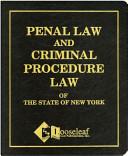
PENDIDIKAN ANTIKORUPSI (MENCIPTAKAN PEMAHAMAN GERAKAN DAN BUDAYA ANTIKORUPSI)
Lembaga pendidikan merupakan tumpuan pendidikan karakter jangka panjang bagi generasi muda Indonesia. Untuk itu, sangat penting untuk menanamkan pendidikan anti korupsi secara berkesinambungan. Pendidikan antikorupsi merupakan salah satu bentuk pencegahan dan pemberantasan korupsi yang dilaksanakan melalui pendidikan, baik formal maupun nonformal. Menurut Komisi Pemberantasan Korupsi (2018), pendidikan anti korupsi adalah proses yang bertujuan untuk memperkuat sikap anti korupsi pada mahasiswa, baik sarjana maupun mahasiswa. Secara mental, bangsa Indonesia memiliki karakter khusus yang menjadi cikal bakal terjadinya tindakan korupsi. Di antara sikap tersebut adalah meremehkan kualitas, mencintai budaya instan, tidak yakin, tidak disiplin, dan sering melalaikan tanggung jawab. Sikap negatif seperti ini perlu dijauhkan dari pola pikir orang Indonesia karena pendidikan mereka di sekolah dan kampus sebagai tempat pendidikan karakter yang baik. Di satu sisi, bangsa kita memiliki kelemahan perilaku yang diwarisi dari kolonialisme. Memotong mental, tidak menghargai waktu, meremehkan kualitas, tidak yakin dan masih banyak lagi. Sementara itu, di sisi lain, dunia pendidikan yang seharusnya memperkuat budaya antikorupsi, semakin terasa tidak konsisten dalam menjalankan fungsinya. Proses pendidikan lebih mementingkan penguasaan pengetahuan itu sendiri daripada membiasakan diri dengan perilaku yang baik. Meskipun sekolah melaksanakan berbagai kegiatan serupa, hal tersebut dilakukan seolah-olah terpisah dari proses pembelajaran secara utuh. Oleh karena itu, sudah saatnya mengembalikan sekolah sebagai lokomotif untuk memperkuat budaya antikorupsi jangka panjang. Kita mulai dengan melakukan pendidikan anti korupsi yang dipimpin oleh satuan pendidikan.
- ISBN 13 : 6234592414
- ISBN 10 : 9786234592412
- Judul : PENDIDIKAN ANTIKORUPSI (MENCIPTAKAN PEMAHAMAN GERAKAN DAN BUDAYA ANTIKORUPSI)
- Pengarang : Alif Ilman Mansyur, Susiana Dewi Ratih, Christina Bagenda, Rejeki Bangun, Nasrin Nasrin, Yusuf Adam Hilman, Shinta Primasari, Salbiah Salbiah, Susilawati Susilawati, Sudarto Sudarto, Mohamad Hilal Nu’Man, Iqbal Faza, Meti Mediyastuti Sofyan, Arnie Fajar, Yunita Yunita, Cecep Ucu Rakhman,
- Kategori : Law
- Penerbit : Penerbit Widina
- Bahasa : id
- Tahun : 2022
- Halaman : 365
- Google Book : http://books.google.co.id/books?id=zOymEAAAQBAJ&dq=intitle:pendidikan+karakter&hl=&source=gbs_api
-
Ketersediaan :
Lembaga pendidikan merupakan tumpuan pendidikan karakter jangka panjang bagi generasi muda Indonesia.








